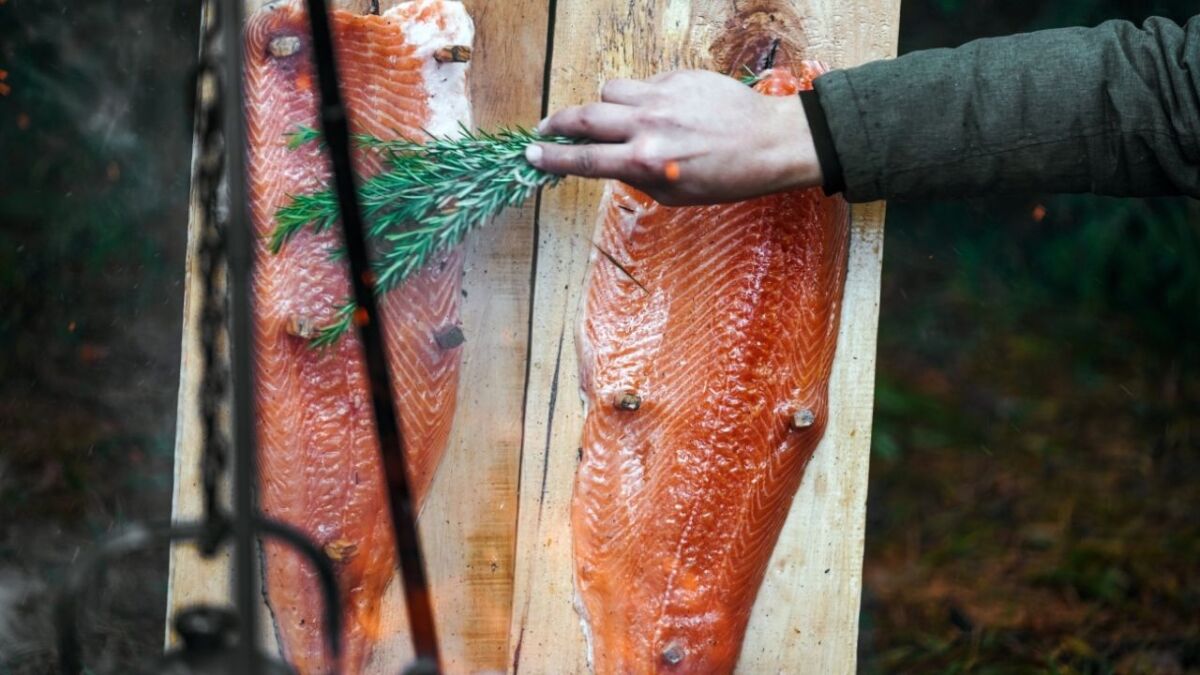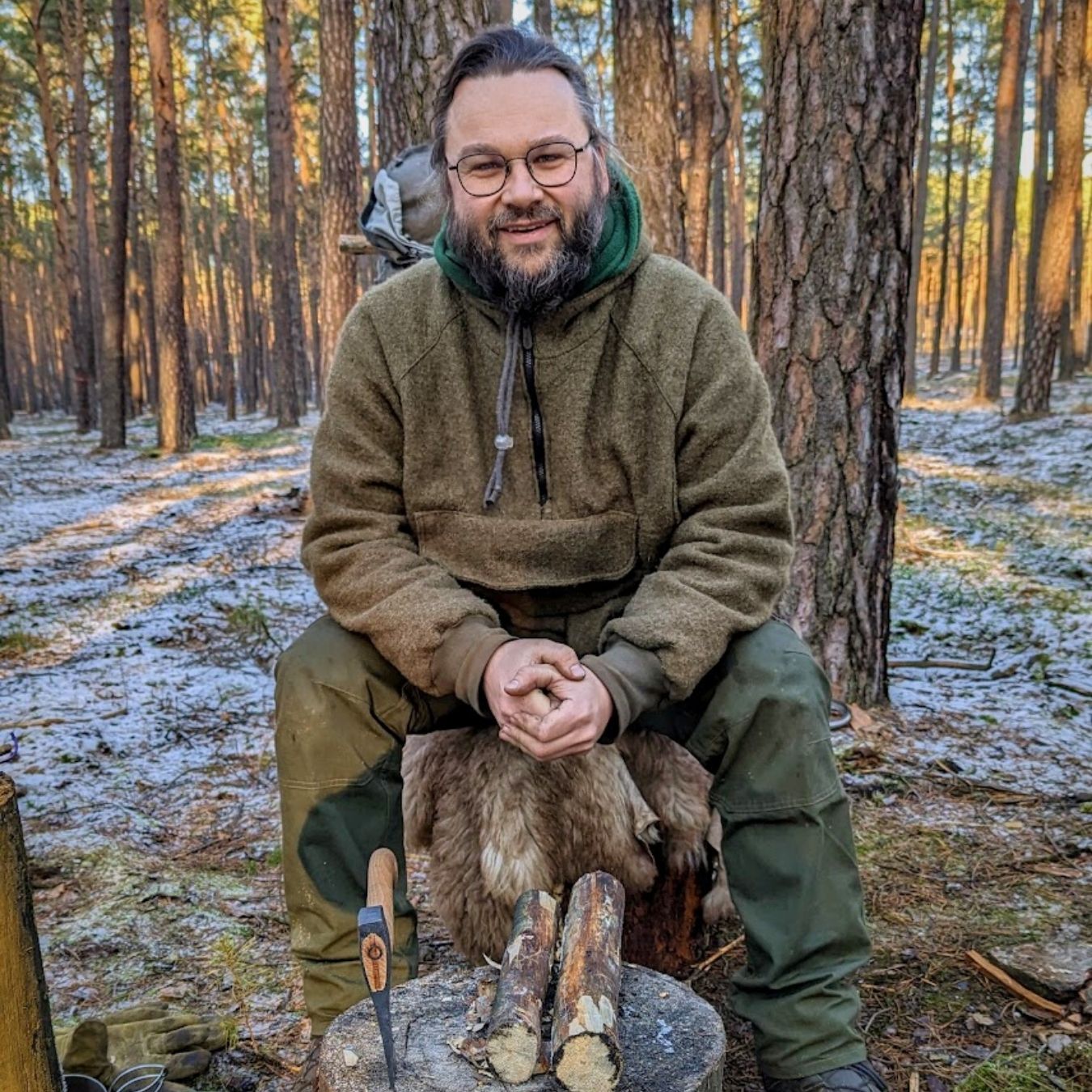
smoking
Nomen
Meaning
Smoking is a term used in the outdoor community to refer to the process of preserving and flavoring food by exposing it to smoke. It is a popular technique in survival, bushcraft, and camping, as it allows for the preparation of delicious meals using natural resources found in the wild. Smoking not only adds a unique taste to food but also helps to extend its shelf life by inhibiting the growth of bacteria. Whether you're smoking fish, meat, or vegetables, this age-old method is a valuable skill to have in your outdoor cooking repertoire.

Examples
„I love the smell of smoking wood in the morning. It's so relaxing and reminds me of camping trips in the wilderness.“
„When I go camping, I always bring my trusty smoking pipe. It's a great way to unwind and enjoy the solitude of nature.“
„My friends and I often gather around the campfire, smoking cigars and sharing stories. It's a bonding experience that brings us closer together.“
„Smoking meat is a skill that every survivalist should learn. It's a great way to preserve food and add flavor to your meals in the wild.“
„During my survival training, I learned how to create a smoking signal to attract attention in case of an emergency. It's a valuable technique to have in your arsenal.“
Origin
The word "smoking" originates from the Old English word "smocian," which means "to emit smoke" or "to give off smoke." It has its roots in the Germanic language family, specifically the West Germanic branch. The word has evolved over time and has been used in various contexts.
In the context of survival and bushcraft, "smoking" refers to the process of preserving food by exposing it to smoke. This technique has been used for centuries to extend the shelf life of meat and fish, as the smoke acts as a natural preservative.
Smoking food not only helps to preserve it but also imparts a unique flavor. The smoke from different types of wood can add distinct tastes to the food, enhancing its overall appeal.
Today, smoking is not only limited to food preservation but has also become a popular cooking method for adding flavor to various dishes. Smokers and smokehouses are commonly used by outdoor enthusiasts, survivalists, and chefs alike to achieve that smoky goodness.
Synonyms
Smoking, Tuxedo, Dinner jacket, Black tie, Formal wear, Evening dress, Tailcoat, Dress suit
Antonyms
Nonsmoking, Abstaining, Quitting, Nonaddictive, Smoke-free, Tobacco-free, Clean-living, Healthy
Relatives
Campfire, Fire, Smoke, Smoking meat, Smoking fish, Smoking food, Smoking shelter, Smoking techniques
Historical and cultural importance
The word "smoking" has a significant historical and cultural relevance. It refers to the act of inhaling and exhaling the smoke produced by burning tobacco or other substances. Smoking has been practiced for centuries and has played a prominent role in various cultures around the world.
In many indigenous cultures, smoking has been used as a ceremonial practice, often associated with spiritual or religious rituals. For example, Native American tribes have a long history of using smoking in sacred ceremonies, such as the peace pipe ceremony. Smoking was seen as a way to connect with the spiritual realm and communicate with ancestors.
In Western societies, smoking gained popularity in the 19th and 20th centuries. It became a symbol of sophistication and social status, especially among men. Smoking was often associated with leisure activities, such as smoking cigars after a fine meal or smoking pipes while engaging in intellectual discussions.
However, in recent decades, the perception of smoking has shifted dramatically due to the well-documented health risks associated with tobacco use. Smoking is now widely recognized as a major cause of various diseases, including lung cancer, heart disease, and respiratory problems. As a result, smoking has become highly stigmatized in many societies, and strict regulations have been implemented to discourage smoking and protect public health.
Despite the negative health consequences, smoking continues to be practiced by some individuals, either as a personal choice or due to addiction. The cultural and historical significance of smoking serves as a reminder of its complex nature and the ongoing debates surrounding its use.
More information about the term smoking
Smoking: A Timeless Skill for Survival
Smoking is a traditional method of preserving and flavoring food that has been used for centuries. It is a skill that every survivalist should master, as it allows you to extend the shelf life of perishable food items and add a delicious smoky flavor to your meals. In this article, I will guide you through the process of smoking food in a survival situation.
Choosing the Right Wood
The first step in smoking food is selecting the right type of wood. Different woods impart different flavors, so it's important to choose one that complements the food you're smoking. Hardwoods like oak, hickory, and mesquite are popular choices for smoking, as they produce a strong and distinct flavor. Fruitwoods like apple and cherry are milder and work well with poultry and fish.
Building a Smokehouse
In a survival situation, you may not have access to a traditional smokehouse. However, you can easily build a makeshift smokehouse using natural materials. Look for a sheltered area with good ventilation, such as a cave or a hollow tree. Create a fire pit and place rocks around it to form a makeshift oven. This will help contain the smoke and heat.
Preparing the Food
Before smoking, it's important to properly prepare the food. Start by cleaning and seasoning the meat or fish. You can use a simple salt and pepper rub or experiment with different spices and marinades. Let the food sit for a while to absorb the flavors. This will enhance the taste and tenderness of the final product.
Smoking Techniques
There are two main smoking techniques: hot smoking and cold smoking. Hot smoking involves cooking the food at a higher temperature, typically between 225°F and 250°F (107°C and 121°C). This method not only imparts a smoky flavor but also fully cooks the food. Cold smoking, on the other hand, is done at lower temperatures, around 90°F to 100°F (32°C to 38°C). This method is used primarily for flavoring and preserving rather than cooking.
Monitoring the Smoking Process
Once you have your smokehouse set up and the food prepared, it's time to start smoking. Place the food on a rack or hang it from the ceiling of the smokehouse. Keep a close eye on the temperature and smoke levels. You want a steady stream of smoke, but not too much heat. Adjust the fire and ventilation as needed to maintain the ideal smoking conditions.
Enjoying the Fruits of Your Labor
After several hours of smoking, your food should be ready to enjoy. Take it out of the smokehouse and let it rest for a few minutes before serving. The smoky aroma and rich flavors will make your survival meal a memorable experience. Remember to store any leftovers properly to ensure their longevity.
Smoking is a valuable skill for any survivalist. It allows you to preserve food, enhance its flavor, and create delicious meals even in the harshest of conditions. So, next time you find yourself in the wilderness, don't forget to pack your smoking skills along with your survival gear.
Back to overview

